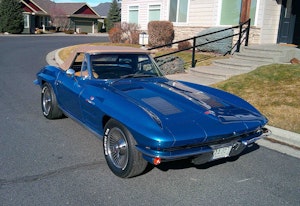Media | Articles
Ford is shining up a Rust Belt ruin to usher in a tech-focused future
On paper, the auto industry is having another stellar year. But instead of proclaiming triumph over the summer, the trade rags, like the national newspapers, were a chronicle of angst, turmoil, and thoroughly bizarre headlines. Tesla was building cars in a tent. Audi CEO Rupert Stadler was in jail. Tariffs threatened to jack the prices of everything. Chrysler parent FCA was reportedly talking merger with Hyundai. And Ford, which started selling the classic three-box sedan in 1949, said it will mostly leave the car business to concentrate on more profitable trucks and SUVs.
Ford’s lock on the summer news cycle continued when the company revealed that it is also buying the derelict Michigan Central Station, a 105-year-old train depot just west of downtown Detroit. Since its abandonment in 1988, the 18-story colossus has towered over the downcast city like the decomposing ghost of Banquo, there to accuse the criminal neglect of an entire metropolis and its cultural treasures. As much as Detroiters are bonkers over the prospect of this stately, beaux arts structure gaining new life, Ford shareholders are entitled to wonder what’s in it for them. With so many existential challenges facing the business, from autonomy to electrification to regulation, this seems an odd time to launch into the costly business of architectural conservation with a graffiti-covered Rust Belt ruin.

Well, company chairman Bill Ford, whose family name is about to grace said ruin, believes it’s about luring high-tech talent to the aforementioned Rust Belt. Ford is constructing a tech campus in the surrounding Corktown neighborhood, with the station as its centerpiece, because Ford believes tech workers don’t want to labor in anonymous cubicle farms. Or in the company’s blue-glass midcentury-modern headquarters, or in its existing product campus, just up the road in Dearborn and freshly remodeled at a cost of $1 billion. Tech workers—by which Ford means young workers—are attracted to cool, “authentic,” urban environments where old and new gel into a sort of hipsterized mashup of eras and styles.
And why, you snort, does anyone care about what computer-clacking millennials and Gen Zs want in a work space? Because the industry is fundamentally changing. Somebody somewhere said, “Every company today is an IT company,” and the auto industry is no exception. It’s less about stamping steel and forging iron and far more about coding software. With dozens of circuit boards and hundreds of millions of lines of code, the modern car is becoming just the box that the computer comes in.
Marketplace
Buy and sell classics with confidence
Go to YouTube and watch the episode of Autoline Network, a Detroit-based industry-insider talk show, in which a Tesla Model 3 gets hacked apart by a company that tears down new cars for competitive analysis. The guest, Sandy Munro of Munro & Associates, has disassembled hundreds of new cars over his career and clearly understands the deep art of carmaking. His conclusion: The Model 3’s body may have the quality of a 1990s Kia, but it packs cutting-edge electronics comparable to those in an F-35 fighter jet. “Anybody who doesn’t look at the electronics in the Model 3 is in peril,” warns Munro.
Ford, which is used to fighting with other automakers for talent, now fights with pretty much every industry out there for talent. If you’re a capable coder, the delights of the splendid San Francisco Bay may beckon, or L.A.’s sunny Silicon Beach, or Austin’s Silicon Hills, or the Midwest’s Silicon Prairie. But the best places are already crowded and expensive. Ford, which has a long history of taking interest in its workers’ lifestyles, is betting that enough skilled folk will like the idea of reporting to a restored train station opened in 1914 during the ascendancy of the American empire—especially if it’s in a rebounding waterside city full of affordable housing and alluring possibilities for urban happiness.
The article first appeared in Hagerty Drivers Club magazine. Click here to subscribe to our magazine and join the club.










